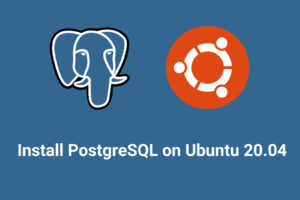
Git Commands – Beginners Guide
Git is a version control system that allows developers to track changes to their code and collaborate on projects with other developers. Git is widely used in the software development industry, and learning Git commands is essential for any beginner developer. In this guide, we will discuss some of the most commonly used Git commands and their functionalities.
- git init
Thegit initcommand is used to create a new Git repository. It initializes a new repository in the current directory, creating a .git subdirectory that contains all the necessary files for version control. - git add
Thegit addcommand is used to stage changes in the current working directory for the next commit. It adds files to the staging area, which means that they will be included in the next commit. - git commit
Thegit commitcommand is used to save changes to the local repository. It creates a new commit with a message describing the changes that have been made. Commits are the backbone of Git, and they allow developers to track changes to their codebase. - git clone
Thegit clonecommand is used to create a local copy of a remote repository. It downloads the entire repository to the local machine, including all branches and history. - git push
Thegit pushcommand is used to upload local changes to a remote repository. It sends the commits to the remote repository and updates the branch with the latest changes. - git pull
Thegit pullcommand is used to download changes from a remote repository to the local machine. It updates the local repository with the latest changes from the remote repository. - git status
Thegit statuscommand is used to display the current status of the repository. It shows which files have been modified, which files are staged for commit, and which files are not tracked by Git. - git branch
Thegit branchcommand is used to create, list, and delete branches. It allows developers to work on different parts of the codebase simultaneously without interfering with each other. - git checkout
Thegit checkoutcommand is used to switch between branches or revert changes in the repository. It allows developers to move between different states of the codebase and track changes made to different versions. - git merge
Thegit mergecommand is used to merge changes from one branch to another. It combines the changes from one branch into another branch, allowing developers to collaborate on the same codebase. - git remote
Thegit remotecommand is used to manage the remote repositories that a local repository is connected to. It allows developers to add, remove, and list remote repositories.
- git fetch
Thegit fetchcommand is used to download changes from a remote repository to the local machine. It updates the local copy of the repository with the latest changes but does not merge them.
- git diff
Thegit diffcommand is used to show the differences between two versions of a file or between two branches. It shows the changes that have been made and helps developers identify what has been added or removed.
- git log
Thegit logcommand is used to show the commit history of a repository. It displays all the commits that have been made, including the commit message, author, and timestamp.
- git reset
Thegit resetcommand is used to undo changes in the repository. It allows developers to remove changes that have been staged for commit or to revert to a previous commit.
- git stash
Thegit stashcommand is used to save changes that are not yet ready to be committed. It allows developers to work on other parts of the codebase without losing their changes.
- git tag
Thegit tagcommand is used to mark a specific point in the repository’s history with a unique identifier. It is commonly used to mark important releases or milestones.
- git config
Thegit configcommand is used to set up Git configuration options. It allows developers to set global, repository-specific, or user-specific configuration options. - git -h
Thegit -hcommand is a Git command that displays a help message that includes a list of common Git commands and a brief description of what each command does. It is a quick reference guide for Git commands that can be accessed from the command line. Thegit -hcommand is a useful tool for beginners who are just getting started with Git and want to learn more about its functionality. It is also useful for more experienced developers who need a quick reminder of a specific Git command or its syntax.
Download Git commands cheat sheet provided by Github.com here. Download Link
Conclusion
Git is an essential tool for any software developer, and learning Git commands is crucial for working with Git. These ten Git commands are some of the most commonly used commands and are essential for beginners to know. By mastering these commands, developers can track changes to their code, collaborate with other developers, and manage their codebase efficiently.
Keywords: Git commands, Version control, Code management, Beginners guide, Git basics, Git workflow, Source control, Collaborative development, Branching, Merging, Committing changes, Git log, Git stash, Git tag, Git reset, Git diff, Git config, Remote repositories, Fetching changes, Git documentation
Tag:Beginners guide, Branching, Code management, Collaborative development, Committing changes, Fetching changes, git, Git basics, Git commands, Git config, Git diff, Git documentation, Git log, Git reset, Git stash, Git tag, Git workflow, git-merge, Merging, pull request, Remote repositories, revert pull, Source control, Version control, version-control



